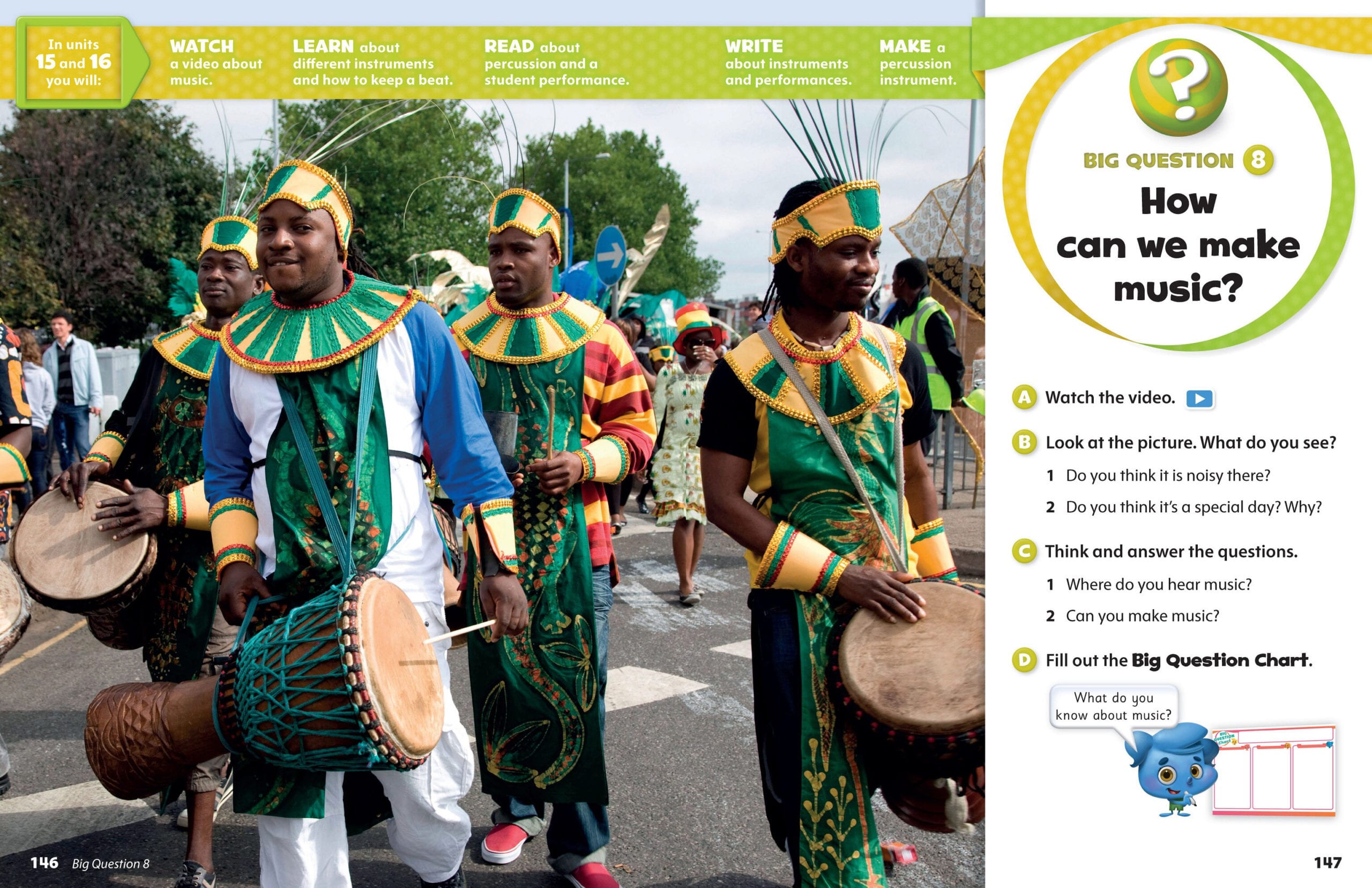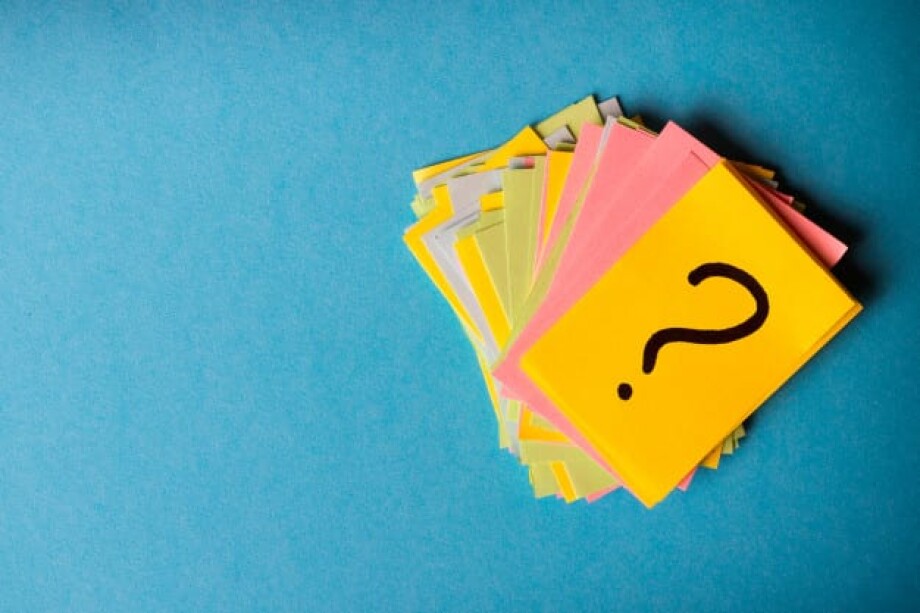When introducing a topic how do you engage your young learners? How do you make them interested in the topic? How do you let students know the goals for the lesson?
The most common way to introduce goals of the lesson is just to say “Today we are going to talk about music”. Do you think students really get excited after hearing it? Probably not. That’s why I like starting a new topic with a Big Question. This idea I first saw in Oxford Discover coursebooks. Every unit in the course starts with a spread like this.
What is a Big Question?
A Big Question is a lesson aim or an objective, kind of a teaser question that will trigger curiosity and create expectations. Big Questions stimulate students’ thinking about the topic, it enables them to ask their own questions, find their own answers, and explore the world around them. Students can engage in the question and share their initial thoughts. Lessons, units, and topics are more motivating when they begin with a question, the answer to which students want to know. Not only great questions generate interest, but they also help to show the progress, the results of what students learn in the lessons. Finally, great questions increase the cognitive organization of the content by framing it into a meaningful answer to the opening question.

How to create Big Questions?
Think of the outcomes of the lesson not in terms of grammar or vocabulary but in CLIL format. Language itself should not be an aim, it should be considered as a tool to learn something new. In lessons, students should explore the topic and share their knowledge. By the end of the lesson, students should get new information about the world. Add some curious facts that you students might be interested in, turn them into a question.
Remember that Big Questions do not have only one correct answer, they are a springboard for ideas and opinions. Let’s go back to the topic from the beginning of the article. For example, in a lesson about music the examples of Big Questions might include:
- How can we make music?
- What makes a song great?
- What makes a song terrible?
- What music genres are most popular in …?
The question must be connected to the content, so that the following learning activities actually answer the question, lead your students toward the answers to the big question throughout the lesson.
The question must fit your students’ age, ability, and experiences. In addition, the question needs to provoke both thought and curiosity.
After asking the question, you might ask your students to complete KWL chart. Find out more about KWL charts here.
Young learners are naturally very curious, they want to know more about this big world. This strategy is powerful because suddenly students want to answer the question and feel empowered to respond. That’s why it is a good idea to start a lesson with a BIG question.






 Вероника Аветисян
Вероника Аветисян 
 Маргарита Аветисян
Маргарита Аветисян 


